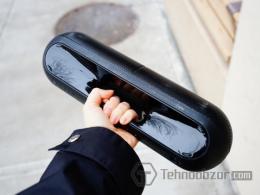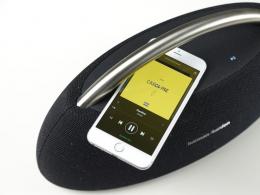3ph motor connection diagram. Connecting a three-phase motor to the network
In the household, sometimes it becomes necessary to start a 3-phase asynchronous electric motor (BP). In the presence of a 3-phase network, this is not difficult. In the absence of a 3-phase network, the engine can also be started from a single-phase network by adding capacitors to the circuit.
Structurally, IM consists of a fixed part - the stator, and a movable part - the rotor. Windings are laid on the stator in the grooves. The stator winding is a three-phase winding, the conductors of which are evenly distributed around the circumference of the stator and are laid phase by phase in grooves with an angular distance of 120 el. degrees. The ends and beginnings of the windings are brought out to the junction box. The windings form pairs of poles. The rated speed of the motor rotor depends on the number of pole pairs. Most general industrial motors have 1-3 pairs of poles, less often 4. Induction motors with a large number of pairs of poles have low efficiency, larger dimensions, therefore they are rarely used. The more pairs of poles, the lower the frequency of rotation of the motor rotor. General industrial IMs are produced with a number of standard rotor speeds: 300, 1000, 1500, 3000 rpm.
The IM rotor is a shaft on which there is a short-circuited winding. In low and medium power induction motors, the winding is usually made by pouring molten aluminum alloy into the grooves of the rotor core. Together with the rods, short-circuited rings and end blades are cast, which ventilate the machine. In cars high power the winding is made of copper rods, the ends of which are connected to short-circuited rings by welding.
When the HELL is turned on in a 3f network, the current begins to flow through the windings in turn at different times. In one period of time, the current passes along the pole of phase A, in the other along the pole of phase B, in the third along the pole of phase C. Passing through the poles of the windings, the current alternately creates a rotating magnetic field that interacts with the rotor winding and causes it to rotate, as if pushing it in different planes at different times.
If you turn on the AD in a 1f network, the torque will be created by only one winding. Such a moment will act on the rotor in one plane. This moment is not enough to move and rotate the rotor. To create a phase shift of the current of the pole, relative to the supply phase, phase-shifting capacitors are used Fig.1.
Capacitors can be used of any type, except for electrolytic ones. Well suited capacitors such as MBGO, MBG4, K75-12, K78-17. Some capacitor data are shown in table 1.

If it is necessary to gain a certain capacitance, then the capacitors should be connected in parallel.
The main electrical characteristics of IM are given in the passport Fig.2.

Fig.2
It can be seen from the passport that the motor is three-phase, with a power of 0.25 kW, 1370 rpm, it is possible to change the winding connection scheme. The connection diagram of the "triangle" windings at a voltage of 220V, "star", at a voltage of 380V, respectively, the current is 2.0 / 1.16A.
The star connection diagram is shown in Fig. 3. With this inclusion, a voltage is applied to the motor windings between the points AB (linear voltage U l) times the voltage between the points AO (phase voltage U f).

Fig.3 Connection scheme "star".
Thus, the line voltage is twice the phase voltage: . In this case, the phase current I f is equal to the linear current I l.
Consider the connection diagram "triangle" fig. 4:

Fig. 4 Connection diagram "delta"
With such a connection, the linear voltage U L is equal to the phase voltage U f., And the current in the line I l is twice the phase current I f:.
Thus, if the AD is designed for a voltage of 220/380 V, then to connect it to a phase voltage of 220 V, a “triangle” stator winding connection scheme is used. And for connection to a linear voltage of 380 V - a star connection.
To start this IM from a single-phase network with a voltage of 220V, we should turn on the windings according to the "triangle" scheme, Fig.5.

Fig. 5 Connection diagram of the EM windings according to the "triangle" scheme
The connection diagram of the windings in the outlet box is shown in fig. 6

Fig. 6 Connection in the output box of the ED according to the “triangle” scheme
To connect the electric motor according to the “star” scheme, it is necessary to connect two phase windings directly to a single-phase network, and the third - through a working capacitor Ср to any of the network wires fig. 6.
The connection in the output box for the star circuit is shown in fig. 7.

Fig. 7 Connection diagram of the EM windings according to the "star" scheme
The connection diagram of the windings in the outlet box is shown in fig. 8

Fig. 8 Connection in the output box of the ED according to the "star" scheme
The capacity of the working capacitor C p for these circuits is calculated by the formula:
,
where I n - rated current, U n - rated operating voltage.
In our case, for switching on according to the "triangle" scheme, the capacitance of the working capacitor C p \u003d 25 μF.
The operating voltage of the capacitor must be 1.15 times the nominal supply voltage.
To start an AD of low power, a working capacitor is usually sufficient, but at a power of more than 1.5 kW, the engine either does not start or picks up speed very slowly, so it is also necessary to use a starting capacitor C p. The capacity of the starting capacitor should be 2.5-3 times greater than the capacity of the working capacitor.
The connection diagram of the motor windings connected according to the "triangle" scheme using starting capacitors C p is shown in fig. nine.

Fig. 9 Connection diagram of the EM windings according to the “triangle” scheme using starting condensates
The connection diagram of the star motor windings using starting capacitors is shown in fig. 10.

Fig. 10 Scheme of connecting the EM windings according to the "star" scheme using starting capacitors.
Starting capacitors C p are connected in parallel with the working capacitors using the KN button for a time of 2-3 s. In this case, the speed of rotation of the rotor of the electric motor should reach 0.7 ... 0.8 of the nominal speed of rotation.
To start the IM with the use of starting capacitors, it is convenient to use the button in Fig. 11.

Fig.11
Structurally, the button is a three-pole switch, one pair of contacts of which closes when the button is pressed. When released, the contacts open and the remaining pair of contacts remain on until the stop button is pressed. The middle pair of contacts performs the function of a KN button (Fig. 9, Fig. 10), through which starting capacitors are connected, the other two pairs work as a switch.
It may turn out that in the motor connection box the ends of the phase windings are made inside the motor. Then HELL can be connected only according to the schemes of Fig. 7, fig. 10, depending on power.
There is also a diagram for connecting the stator windings of a three-phase electric motor - an incomplete star fig. 12. Connection according to this scheme is possible if the beginnings and ends of the phase windings of the stator are brought to the junction box.

Fig.12
It is advisable to connect the ED according to this scheme when it is necessary to create a starting torque that exceeds the nominal one. Such a need arises in the drives of mechanisms with difficult starting conditions, when starting mechanisms under load. It should be noted that the resulting current in the supply wires exceeds the rated current by 70-75%. This must be taken into account when choosing the wire section for connecting the electric motor.
The capacity of the working capacitor C p for the circuit of fig. 12 is calculated by the formula:
.
Capacitances of starting capacitors should be 2.5-3 times greater than the capacitance C p. The operating voltage of the capacitors in both circuits must be 2.2 times the rated voltage.
Typically, the conclusions of the stator windings of electric motors are marked with metal or cardboard tags indicating the beginnings and ends of the windings. If for some reason there are no tags, proceed as follows. First, the belonging of the wires to the individual phases of the stator winding is determined. To do this, take any of the 6 external terminals of the electric motor and connect it to any power source, and connect the second output of the source to a control light and, with the second wire from the lamp, alternately touch the remaining 5 terminals of the stator winding until the lamp lights up. When the light comes on, it means that the 2 outputs belong to the same phase. Let's conditionally mark the beginning of the first wire C1 with tags, and its end - C4. Similarly, we find the beginning and end of the second winding and denote them C2 and C5, and the beginning and end of the third - C3 and C6.
The next and main step will be to determine the beginning and end of the stator windings. To do this, we use the selection method, which is used for electric motors with a power of up to 5 kW. We connect all the beginnings of the phase windings of the electric motors according to the previously attached tags to one point (using the “star” scheme) and turn on the electric motor in a single-phase network using capacitors.
If the engine immediately picks up the rated speed without a strong buzz, this means that all the beginnings or all ends of the winding have hit the common point. If, when turned on, the engine hums strongly and the rotor cannot reach the rated speed, then in the first winding, terminals C1 and C4 should be swapped. If this does not help, the ends of the first winding must be returned to their original position and now the conclusions C2 and C5 are reversed. Do the same; for the third pair if the engine continues to hum.
When determining the beginnings and ends of the windings, strictly adhere to the safety regulations. In particular, when touching the terminals of the stator winding, hold the wires only by the insulated part. This must also be done because the electric motor has a common steel magnetic circuit and a large voltage may appear on the terminals of other windings.
To change the direction of rotation of the IM rotor, connected to a single-phase network according to the “triangle” scheme (see Fig. 5), it is enough to connect the third phase stator winding (W) through a capacitor to the terminal of the second phase stator winding (V).
To change the direction of rotation of an IM connected to a single-phase network according to the “star” scheme (see Fig. 7), it is necessary to connect the third phase stator winding (W) through a capacitor to the terminal of the second winding (V).
When checking the technical condition of electric motors, it is often possible to notice with chagrin that after a long operation, extraneous noise and vibration appear, and the rotor is difficult to turn manually. The reason for this may be the poor condition of the bearings: the treadmills are covered with rust, deep scratches and dents, individual balls and the separator are damaged. In all cases, it is necessary to inspect the electric motor and eliminate the existing faults. In case of minor damage, it is enough to wash the bearings with gasoline and lubricate them.
Asynchronous three-phase AC motors of 380 volts have proven themselves to be widely used. Thanks to reliable performance and minimum requirements on maintenance motors have found application in everyday life when changing the standard switching circuit. Only those who are fluent in electrical engineering and electromechanics can connect a three-phase motor to a single-phase network.
Asynchronous three-phase motors
Asynchronous motors mechanically consist of two parts: a stator and a rotor. The stator is a fixed part, which consists of a core made of electrical steel with high magnetic properties.
 The core is assembled from separate sheets to prevent the occurrence of Foucault eddy currents that can occur in the alternating magnetic field of the conductor.
The core is assembled from separate sheets to prevent the occurrence of Foucault eddy currents that can occur in the alternating magnetic field of the conductor.
Each of the plates is separately insulated with a special varnish. The grooves of the core are equipped with copper enameled wire, consisting of three windings, which are located one from the other with an angular distance of 120 degrees.
A freely rotating movable part, called the rotor, is placed inside the core at a distance of at least 0.5 mm to 3 mm from each other.
Standard connection
Connection of a three-phase motor to a three-phase network is carried out according to the connection scheme of the "Star" type. With such a connection, a voltage of 220 V is applied to each of the phases separately relative to the central common point of "Zero", and between each of the phases the magnitude of the linear voltage will be 380 V.
The advantage of this connection method:
- Small starting currents.
- Soft start.

The second way to connect "Triangle". The connection of the windings is connected in series, in a circle. The beginning of the first winding (A) is connected to the end of the third ©, and the end of the first (A) is connected to the beginning of the second (B), the end of the second winding (B) is connected to the beginning of the third ©. The main disadvantage of such a connection in a three-phase 380 V network is:
- Increased starting current exceeding the rated current by 7-8 times, causing an emergency overload of the network.
- Increased current flow in operating condition.
When connected in delta, the power of the electric motor becomes higher than when connected with a star. IN automated systems the engine is started and accelerated in the star mode, bringing the speed to the nominal speed, after which the automatic transition to the triangle mode is performed.
Non-standard scheme
You can connect a three-phase motor to 220 volts by making changes to the standard switching circuit, which will reduce its nameplate power by 30%. Connecting a 380 V to 220 V motor through a capacitor will significantly affect its performance in the practical use of capacitors, increasing the capacitive phase shift, with simple implementation and lower losses.
To shift the phase, the capacitor can be connected in parallel to one of the three phases of the motor. Turning on the windings according to the triangle scheme gives useful power more than turning on "Star". For more powerful motors, the connection diagram of a three-phase 220 V electric motor provides for the use of a starting capacitor in its circuits, switched on for a short period of time. After starting and speeding up, the starting capacitor is disconnected, and the worker remains connected.

The starting capacitor in the circuit is connected in parallel with the main one. The motor can be started using the start button. The capacity of the starting capacitor is 2-3 times higher than that of the worker and the charge can remain on it long time. For safety reasons, resistors with a resistance of about 300 kOhm and not more than 1 MΩ, with a power of 2-3 W, are introduced into the circuit, which are necessary for discharging capacitors.
An asynchronous motor, when connected to 220 V, requires the necessary accuracy with the selection of the capacities of the starting and main capacitors, ensuring its confident start and reliable operation. With insufficient capacity, the power of the electric motor will be insufficient, which will affect the quality of its operation, and with excess, the currents flowing through the windings increase, causing overheating of the windings, creating an interturn circuit and failure of the electric motor.
How to choose the capacitance of capacitors
In order not to go into the details of an engineering calculation, using cumbersome formulas, you can use a simple and understandable calculation of the capacitance of a capacitor, based on the condition that 7 microfarads are taken for every 100 W. If the engine has a power of 1 kilowatt (1000 W), then 7 times 10 is calculated, resulting in 70 microfarads.
The resulting capacitance in the calculation may not always coincide with the tabular values \u200b\u200bof manufactured capacitors. To obtain the required capacitance, it is necessary to connect the capacitors in parallel with each other for the total value of the calculated capacitance. Starting capacitors have a reduced operating time only at start-up, which makes it possible to use inexpensive containers specially designed for this purpose.
If the engine is started without load, then the need for a starting capacitor is eliminated. When using a load, it is mandatory to use a starting capacitor.
You can use film capacitors or metal-paper(MBGO, MBGCH, K78-17, K75-12, BGT and others). The allowable voltage margin should be 30% higher than the mains voltage, which is reflected on the capacitor case.
Connecting a 380 V to 220 V motor through a capacitor also allows you to change the direction of rotation of the motor.
Reverse switching can be done using a magnetic starter. It is necessary to supply 220 V power (phase and zero) to one of the windings (A), and connect the other two windings (B and C) connected in series in parallel to the winding (A). The capacitor output is connected to the midpoint between the windings (B and C), and its other output is connected either to zero or to phase, which changes the direction of rotation of the asynchronous motor.
Content:
Work three-phase electric motors is considered to be much more efficient and productive than single-phase motors rated at 220 V. Therefore, if there are three phases, it is recommended to connect appropriate three-phase equipment. As a result, connecting a three-phase motor to a three-phase network provides not only economical, but also stable operation of the device. It is not necessary to add any starting devices to the connection diagram, since immediately after starting the engine, a magnetic field is formed in its stator windings. The main condition for the normal operation of such devices is the correct connection and compliance with all recommendations.
Wiring diagrams
The magnetic field created by the three windings ensures the rotation of the rotor of the electric motor. Thus, electrical energy is converted into mechanical energy.
The connection can be made in two main ways - star or delta. Each of them has its own advantages and disadvantages. The star circuit provides a smoother start-up of the unit, however, the engine power drops by about 30% of the nominal value. In this case, delta connection has certain advantages, since there is no power loss. However, this also has its own peculiarity associated with the current load, which increases sharply during start-up. This condition has a negative effect on the insulation of the wires. The insulation can be pierced and the engine completely fails.
Particular attention should be paid to European equipment equipped with electric motors designed for voltages of 400/690 V. They are recommended for connection to our 380 volt networks only by the triangle method. In the case of a star connection, such motors immediately burn out under load. This method applicable only to domestic three-phase electric motors.

In modern units there is a connection box into which the ends of the windings are output. Their number may be three or six. In the first case, the connection scheme is initially assumed by the star method. In the second case, the electric motor can be connected to a three-phase network in both ways. That is, with a star scheme, the three ends located at the beginning of the windings are connected into a common twist. The opposite ends are connected to the phases of the 380 V network, from which the power is supplied. With the triangle option, all ends of the windings are connected in series with each other. The phases are connected to three points at which the ends of the windings are connected to each other.
Using the star-delta scheme
A combined connection scheme, known as a "star-delta", is used relatively rarely. It allows you to make a soft start with a star circuit, and during the main work, a triangle is turned on, which provides the maximum power of the unit.

This connection scheme is quite complicated, requiring the use of three windings installed in the connections at once. The first MP is included in the network and with the ends of the windings. MP-2 and MP-3 are connected to opposite ends of the windings. The delta connection is made to the second starter, and the star connection is made to the third. Simultaneous activation of the second and third starters is strictly prohibited. This will cause a short circuit between the phases connected to them. To prevent such situations, interlocking is established between these starters. When one MP is turned on, the contacts open on the other.
The operation of the entire system occurs according to the following principle: simultaneously with the inclusion of MP-1, MP-3 is switched on, connected by a star. After soft start engine, after a certain period of time, set by the relay, there is a transition to the normal operating mode. Next, the MP-3 is turned off and the MP-2 is turned on according to the triangle scheme.
Three-phase motor with magnetic starter
Connecting a three-phase motor using a magnetic starter is carried out in the same way as through a circuit breaker. It's just that this scheme is supplemented by an on and off block with the corresponding START and STOP buttons.

One normally closed phase connected to the motor is connected to the START button. During pressing, the contacts close, after which the current flows to the motor. However, it should be noted that if the START button is released, the contacts will be open and no power will be supplied. To prevent this, the magnetic starter is equipped with another additional contact connector, the so-called self-pickup contact. It performs the function of a blocking element and prevents the circuit from breaking when the START button is off. The circuit can only be permanently disconnected using the STOP button.
Thus, connecting a three-phase motor to a three-phase network can be done different ways. Each of them is selected in accordance with the model of the unit and specific operating conditions.
Content:
At industrial facilities, they do not experience any special problems, how to connect an electric motor, a three-phase network is supplied there. Asynchronous electric motors operate with three connected windings located along the perimeter of the cylindrical stator. A separate phase is switched on for each winding of the connected motor, the electric motor connection circuit provides an alternating current phase shift, creates torque, and the motors rotate successfully.
In the case of living conditions at residential facilities in private houses and apartments, there are no three-phase electrical lines, single-phase networks are laid, where the voltage is 220 volts. Therefore, a single-phase asynchronous motor is connected according to a different scheme; a device with a starting winding is required.
Design and principle of operation
The motor is connected through a capacitor due to the fact that one winding on the stator of the motor is 220 V with alternating current creates a magnetic field that compensates for its impulses by changing polarity at a frequency of 50 Hz. In this case, the engine hums, the rotor remains in place. To create torque, additional connections are made to the starting windings, where the electrical phase shift will be 90 ° with respect to the working winding.
Do not confuse the geometric concepts of angle with electrical phase shift. In the geometric dimension, the windings in the stator are placed opposite each other.
To accomplish this technically, the design of the electric motor provides a large number of mechanical parts and components electrical circuit:
- stator with main and additional start winding;
- squirrel-cage rotor;
- boron with a group of contacts on the panel;
- capacitors;
- centrifugal switch and many other elements shown above in the figure.
Consider how to connect a single-phase motor. In order to shift the phases, a capacitor is connected in series to the starting winding; when a single-phase asynchronous electric motor is connected, a circular magnetic field induces currents in the rotor. The combination of the strength of the fields and currents create a rotating impulse applied to the rotor, it begins to rotate.
Wiring diagrams
Options for connecting the motor through a capacitor:
- connection diagram of a single-phase motor using a starting capacitor;
- connecting an electric motor using a capacitor in operating mode;
- connection of a single-phase electric motor with starting and running capacitors.
All these schemes are successfully used in the operation of asynchronous single-phase motors. Each case has its own advantages and disadvantages, we will consider each option in more detail.
Circuit with starting capacitor
The idea is that the capacitor is included in the circuit only at start-up, a start button is used, which opens the contacts after the rotor spins up, by inertia it starts to rotate. The magnetic field of the main winding maintains rotation for a long time. As a short-term switch, they put buttons with a group of contacts or relays.

Since the circuit for short-term connection of a single-phase motor through a capacitor provides for a button on a spring, which opens the contacts when released, this makes it possible to save money, the starting winding wires are made thinner. To avoid interturn short circuit, use a thermal relay, which, when the critical temperature is reached, turns off the additional winding. In some designs, a centrifugal switch is installed, which, when a certain rotation speed is reached, opens the contacts.

Schemes and designs for adjusting the speed of rotation and preventing overloads of the electric motor on the machine can be different. Sometimes the centrifugal switch is mounted on the rotor shaft or on other elements rotating from it with a direct connection, or through a gearbox.

Under the action of centrifugal forces, the load pulls the springs with the contact plate, when the set rotation speed is reached, it closes the contacts, the relay switch de-energizes the motor or sends a signal to another control mechanism.
There are options when a thermal relay and a centrifugal switch are installed in the same design. In this case, the thermal relay turns off the engine when exposed to a critical temperature or by the forces of the expanding load of the centrifugal switch.

Due to the characteristics of induction motor the capacitor in the circuit of the additional coil distorts the lines of the magnetic field, from round shape to elliptical, as a result of this, power losses increase, efficiency decreases. Starting performance remains good.
Circuit with a working capacitor
The difference between this circuit is that the capacitor does not turn off after starting, and the secondary winding spins the rotor with impulses of its magnetic field throughout the entire operation. The power of the electric motor in this case increases significantly, the shape of the electromagnetic field can be tried to be brought closer from an elliptical shape to a round one by selecting the capacitance of the capacitor. But in this case, the starting moment is longer in time, and the starting currents are greater. The complexity of the circuit lies in the fact that the capacitance of the capacitor for equalizing the magnetic field is selected taking into account current loads. If they change, then all parameters will not be constant; for the stability of the shape of the magnetic field lines, several capacitors with different capacities can be installed. If the appropriate capacitance is turned on when the load changes, this will improve performance, but significantly complicate the circuit and the operation process.
Combined circuit with two capacitors
The best option for averaging performance is a circuit with two capacitors - starting and working.

Installation and selection of components
Capacitors have considerable dimensions, therefore they do not always fit into the interior of the boron (junction box on the motor housing).

Depending on the installation location and other operating conditions, the capacitors can be located on the outside of the motor next to the switch box. In some cases, the capacitors are taken out into a separate housing located not far from the electric motor.
The capacitance value of capacitors in the ideal case with a constant current load can be calculated, but in most cases the load is unstable, and the calculation procedure is complicated. Therefore, experienced electricians are guided by statistics and practical experience:
- for capacitors working scheme capacitance is selected 0.75 microfarad per 1 kW of power;
- for starting capacitors, 1.8–2 microfarads per kW of power, while taking into account voltage surges during the start and stop period - they fluctuate between 300–600 V. Therefore, the voltage of the capacitor must be at least 400 V.

In general, when choosing a circuit and capacitors for a single-phase motor, one must be guided by the purpose of the motor and operating conditions. When you need to quickly spin the engine, a starting capacitor circuit is used. If it is necessary to have high power and efficiency during operation, a circuit with a working capacitor is used - usually in a single-phase capacitor motor for household needs of low power, within 1 kW.
The connection of the electric motor 380V to 220V is carried out through a capacitor. For this connection, you need to use paper (or starting) capacitors, wherein IMPORTANT to capacitor rated voltage It was greater than or equal to the mains voltage(in this case, it is recommended that the capacitor voltage be 2 times the mains voltage). Capacitors of the following brands (types) can be used:
MBGO, MBGCH, MBGP, MBGT, MBGV, KBG, BGT, OMBG, K42-4, K42-19, etc.
Capacitor capacitance can be determined by the formulas below, or using .
The first thing to do is to correctly connect the terminals of the motor windings. As already known from the article: the windings of the electric motor can be connected along (indicated by - Y) or by (indicated - Δ), while, as a rule, to connect the electric motor to 220V, the “triangle” circuit is used, in order to determine the connection diagram of the windings, you need to look at nameplate attached to it:

Record: "Δ / Y 220/380V" means that to connect this electric motor to 220V it is necessary to connect its windings according to the scheme, and to connect to 380V - according to the scheme how to do it.
The second thing you need to decide is how the electric motor will be started, under load (when a load is applied to its shaft at the time of starting the electric motor and it cannot rotate freely) or without load (when the motor shaft rotates freely at the time of starting, for example, emery , fan, circular saw, etc.).
When starting the engine without load, 1 capacitor is used, which is called the working one, and if it is necessary to start the engine under load in the circuit, in addition to the working one, the 2nd capacitor is additionally used, which is called the starting one, it turns on only at the moment of start.
Let's analyze the connection diagrams of the electric motor 380 to 220 for both cases:
Schemes for connecting an electric motor through a capacitor.
1) Connecting the electric motor through a capacitor according to the "triangle" scheme, starting - without load:
The capacity of the working capacitor for connecting the electric motor with the “triangle” winding connection scheme is calculated by the formula:
CR=4800 * In/ Ufrom; microf
where: In- rated current of the electric motor in Amperes (accepted in accordance with); Ufrom— mains voltage in Volts.
In the circuit, a single-pole circuit breaker is used to turn on the electric motor, but its use is not necessary, you can turn on the electric motor directly to the network through a socket using a regular plug or, for example, turn it on through a regular light switch.
2) Connecting the electric motor through a capacitor according to the "star" scheme, starting - without load:
The capacity of the working capacitor for connecting the electric motor with the “star” winding connection scheme is calculated by the formula:
CR=2800 * In/ Ufrom; microf
where: In- rated current of the electric motor in Amperes (accepted in accordance with the passport data of the electric motor); Ufrom— mains voltage in Volts.
If a 380 to 220 Volt engine is started under load, a starting capacitor must additionally be used in the circuit, otherwise the torque on the motor shaft will not be enough to spin it up and the engine will not be able to start.
The starting capacitor is connected in parallel with the working one and should be turned on only at the moment the engine is started, after the engine picks up speed it must be turned off.
Start Capacitor should be 2.5 - 3 times larger than the working one.
CP= (2,5…3) * CR; microf
With this scheme, to start the electric motor, you must press and hold the SB button, then apply voltage by turning on the circuit breaker, as soon as the engine starts, the SB button must be released. As a button, you can also use a regular switch.
but the best option to connect an electric motor 380 to 220 is to use PNVS-10 (pressure starter with starting contact):
The “start” buttons in these starters have 2 contacts, one of them, when the “start” button is released, opens, turning off the starting capacitor, and the second remains closed and voltage is supplied to the electric motor through it through the working capacitor, the shutdown is performed by the “stop” button.
Reverse motor connected to 220 volts through a capacitor.
So, from the diagrams above, it follows that with any method of connecting the windings (star or delta), three points remain in the motor terminal box for connecting it to the network, conditionally: zero is connected to the first output, phase is connected to the second, and phase is supplied to the third through a capacitor, but what if the engine started to rotate in the wrong direction at startup? To change the direction of rotation of a motor connected through a capacitor, you simply need to switch the phase wire from one output of the electric motor to another, while leaving the neutral wire on the same output, i.e. conditionally: leave zero on the first output, apply the phase to the third, and apply the phase to the second through the capacitor.






